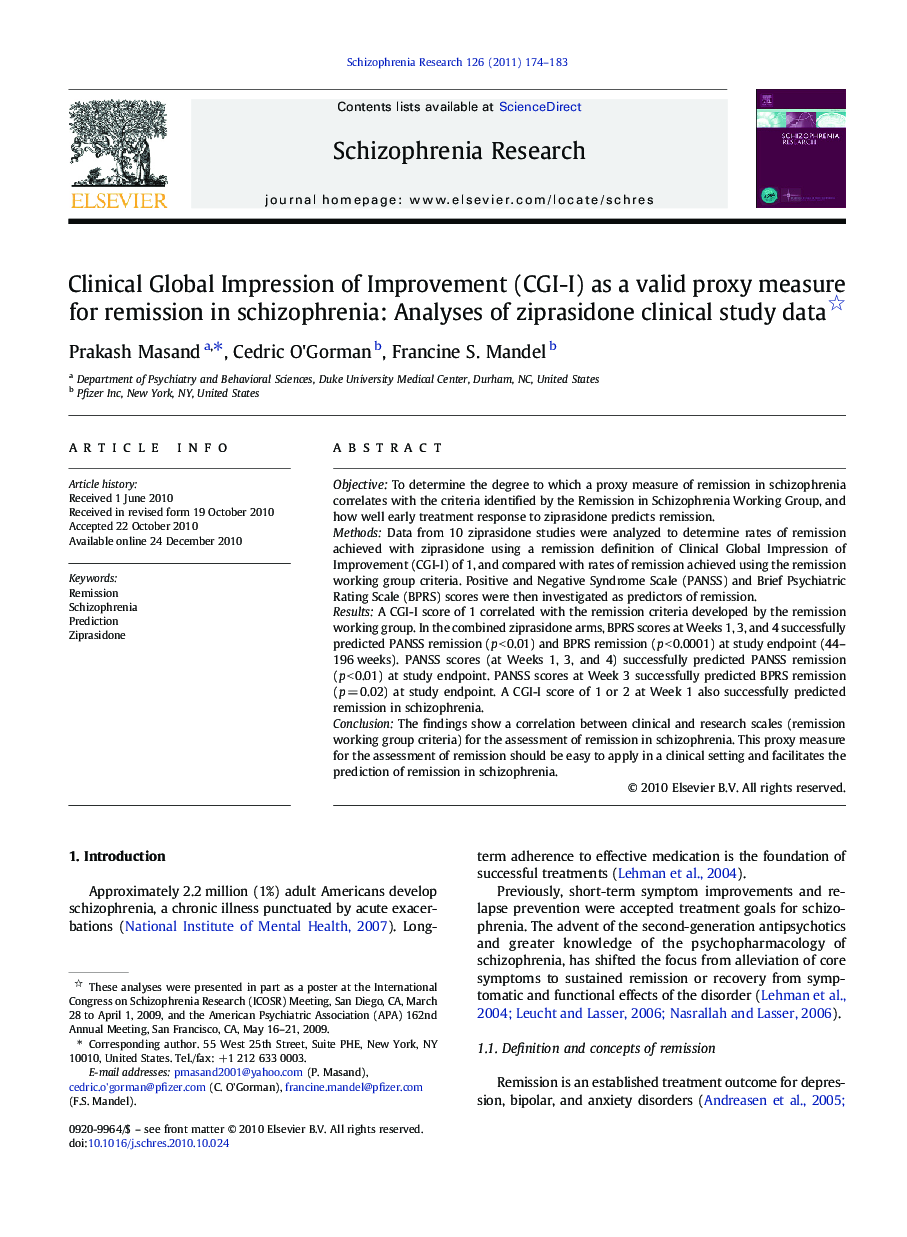| Article ID | Journal | Published Year | Pages | File Type |
|---|---|---|---|---|
| 339871 | Schizophrenia Research | 2011 | 10 Pages |
ObjectiveTo determine the degree to which a proxy measure of remission in schizophrenia correlates with the criteria identified by the Remission in Schizophrenia Working Group, and how well early treatment response to ziprasidone predicts remission.MethodsData from 10 ziprasidone studies were analyzed to determine rates of remission achieved with ziprasidone using a remission definition of Clinical Global Impression of Improvement (CGI-I) of 1, and compared with rates of remission achieved using the remission working group criteria. Positive and Negative Syndrome Scale (PANSS) and Brief Psychiatric Rating Scale (BPRS) scores were then investigated as predictors of remission.ResultsA CGI-I score of 1 correlated with the remission criteria developed by the remission working group. In the combined ziprasidone arms, BPRS scores at Weeks 1, 3, and 4 successfully predicted PANSS remission (p < 0.01) and BPRS remission (p < 0.0001) at study endpoint (44–196 weeks). PANSS scores (at Weeks 1, 3, and 4) successfully predicted PANSS remission (p < 0.01) at study endpoint. PANSS scores at Week 3 successfully predicted BPRS remission (p = 0.02) at study endpoint. A CGI-I score of 1 or 2 at Week 1 also successfully predicted remission in schizophrenia.ConclusionThe findings show a correlation between clinical and research scales (remission working group criteria) for the assessment of remission in schizophrenia. This proxy measure for the assessment of remission should be easy to apply in a clinical setting and facilitates the prediction of remission in schizophrenia.
